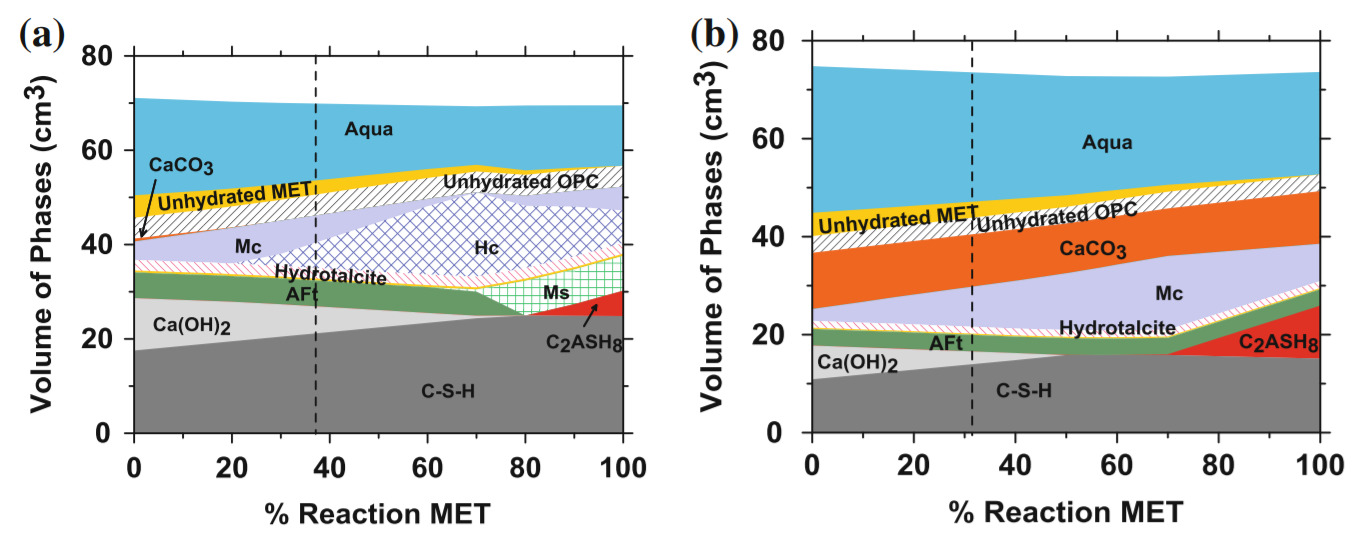Citation
Puerta-Falla, G.; Balonis, M.; Le Saout, G.; Neithalath, N.; Sant, G. In Calcined Clays for Sustainable Concrete, pp. 11-19. Springer Netherlands, 2015.
Puerta-Falla, G.; Balonis, M.; Le Saout, G.; Neithalath, N.; Sant, G. In Calcined Clays for Sustainable Concrete, pp. 11-19. Springer Netherlands, 2015.
Recent studies have demonstrated that in the presence of limestone (CaCO3), carbonate-AFm phases (i.e., hemi- and/or mono-carboaluminate) may be stabilized at the expense of sulfate-AFm, which is more commonly found in cement systems. This suggests that enhancing AFm phase formation may be a novel way of incorporating increased quantities of limestone as a reactive component in cement-based systems. Often, in an ordinary portland cement (OPC), the quantity of the AFm hydrates formed is limited by the availability of aluminum. Therefore, as means of enhancing AFm phase formation, this paper evaluates metakaolin addition to determine how it affects limestone reactions and carbonate-AFm formation in the OPC systems. The results of a multi-method study including: X-ray diffraction with Rietveld refinement (QXRD), strength measurements, thermogravimetric analysis, and thermodynamic calculations are used to quantify solid phase constitutions, and the extent of limestone that has been consumed in reaction. Obtained results suggest that pozzolanic reactions which occur when metakaolin is used as an aluminous source are observed to be beneficial in offsetting the dilutive effects of OPC replacement noted in blended cement formulations.
